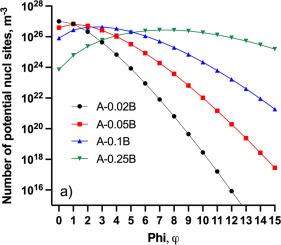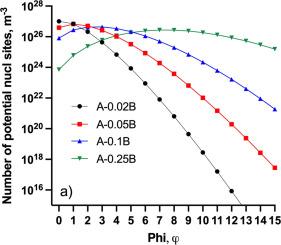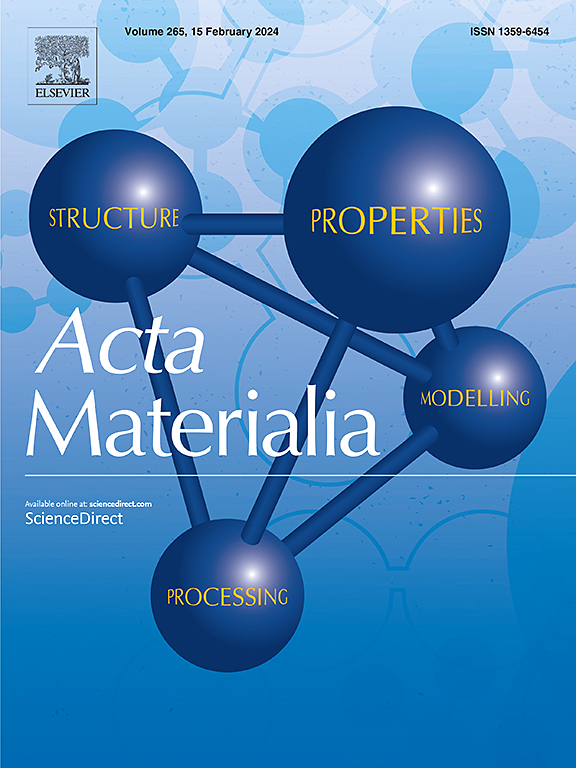动力学受限系统中固态成核的新方法
IF 8.3
1区 材料科学
Q1 MATERIALS SCIENCE, MULTIDISCIPLINARY
引用次数: 0
摘要
成核是我们用来控制工程材料微观结构的相变的第一步。成核问题的出发点通常是经典成核理论(CNT),但对于工程合金等原子移动性有限的低温固态成核,CNT 在定量预测成核方面并不十分成功。CNT 的一个强有力的假设是,所有由热引起的随机波动,无论其成分与块状合金成分相差多远,都是可能的,而且当达到热力学确定的临界尺寸时,它们就会成为晶核。我们考虑了另一个极端,即原子的流动性受到限制,热引起的随机团簇无法在成核事件相关的时间尺度内形成。相反,我们将作为任何溶液统计特征的几何团簇视为原子核的起源,并提出了一个关于原子核数量及其 "活化 "速率的简单模型。研究表明,这种新的 "几何簇 "模型能够成功预测一系列铝-镍-铍金属玻璃结晶过程中的相核竞争,预测固态成核过程中越来越常见的溶剂捕获现象,并预测在铜-钴和铁-铜合金中观察到的沉淀的峰值数量密度。本文章由计算机程序翻译,如有差异,请以英文原文为准。


A new approach to solid-state nucleation in kinetically-constrained systems
Nucleation is the first step of the phase transformations that we use to control the microstructures of engineering materials. The starting point for questions of nucleation is usually Classical Nucleation Theory (CNT) but for solid-state nucleation at low temperatures where atomic mobility is limited, such as in engineering alloys, CNT has not been very successful is quantitatively predicting nucleation. A strong assumption of CNT is that all thermally-induced stochastic fluctuations, no matter how far their compositions lie from the bulk alloy composition, are possible and that they become nuclei when a critical size determined from thermodynamics is reached.
Here we present a new and complementary model for solid-state nucleation. We consider the other extreme where atomic mobility is limited and thermally-induced stochastic clusters cannot form in the time scale relevant for a nucleation event. Instead, we consider the geometric clusters that are a statistical feature of any solution as the origin of the nuclei and present a simple model for the number of nuclei and their rate of ‘activation’. This new ‘geometric cluster’ model is shown to be able to successfully predict the competition in phase nucleation during the crystallization of a series of Al-Ni-Y metallic glass, predict the solvent trapping that is increasingly seen in solid-state nucleation and predict the peak number density of precipitates observed in Cu-Co and Fe-Cu alloys.
求助全文
通过发布文献求助,成功后即可免费获取论文全文。
去求助
来源期刊

Acta Materialia
工程技术-材料科学:综合
CiteScore
16.10
自引率
8.50%
发文量
801
审稿时长
53 days
期刊介绍:
Acta Materialia serves as a platform for publishing full-length, original papers and commissioned overviews that contribute to a profound understanding of the correlation between the processing, structure, and properties of inorganic materials. The journal seeks papers with high impact potential or those that significantly propel the field forward. The scope includes the atomic and molecular arrangements, chemical and electronic structures, and microstructure of materials, focusing on their mechanical or functional behavior across all length scales, including nanostructures.
 求助内容:
求助内容: 应助结果提醒方式:
应助结果提醒方式:


